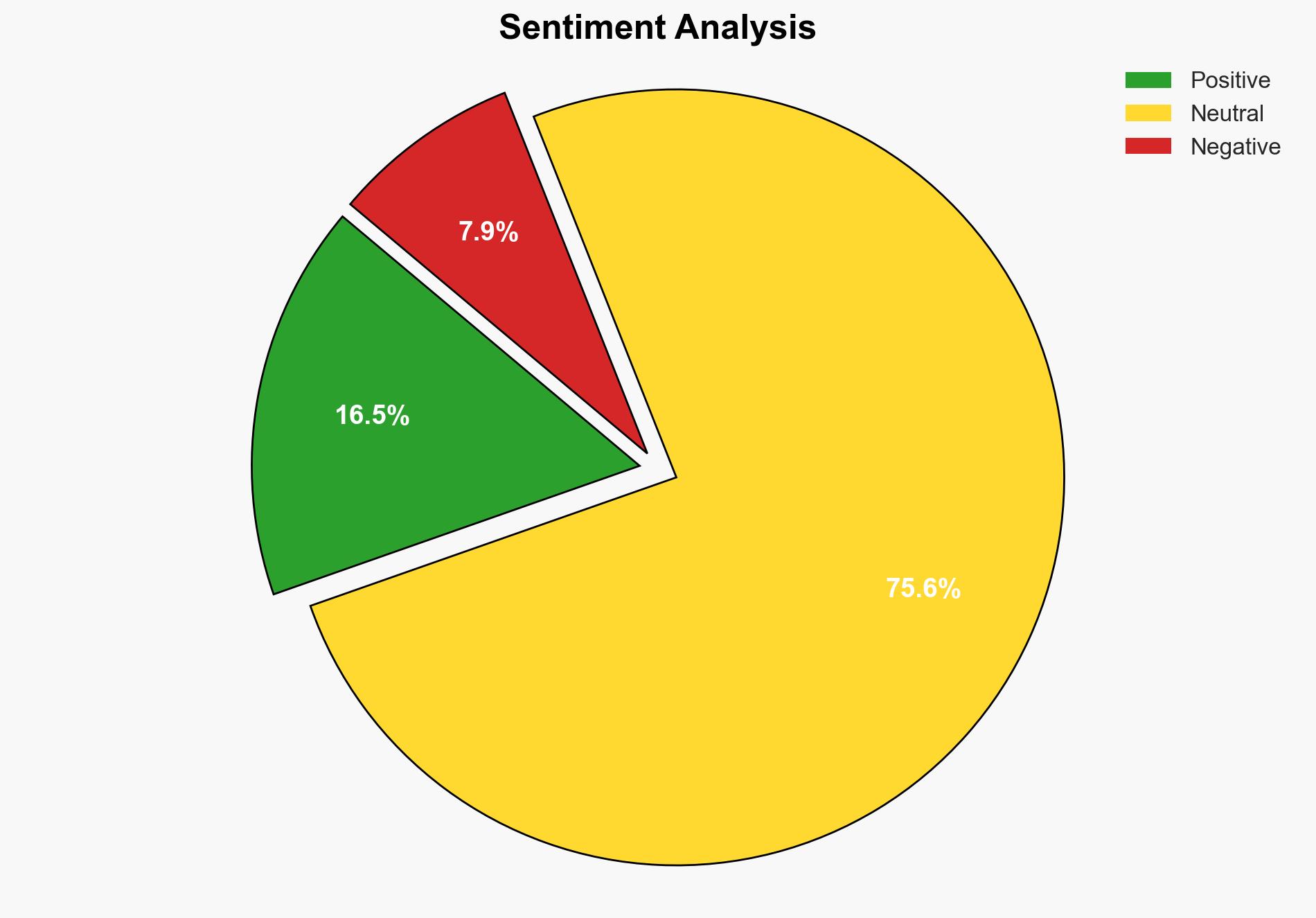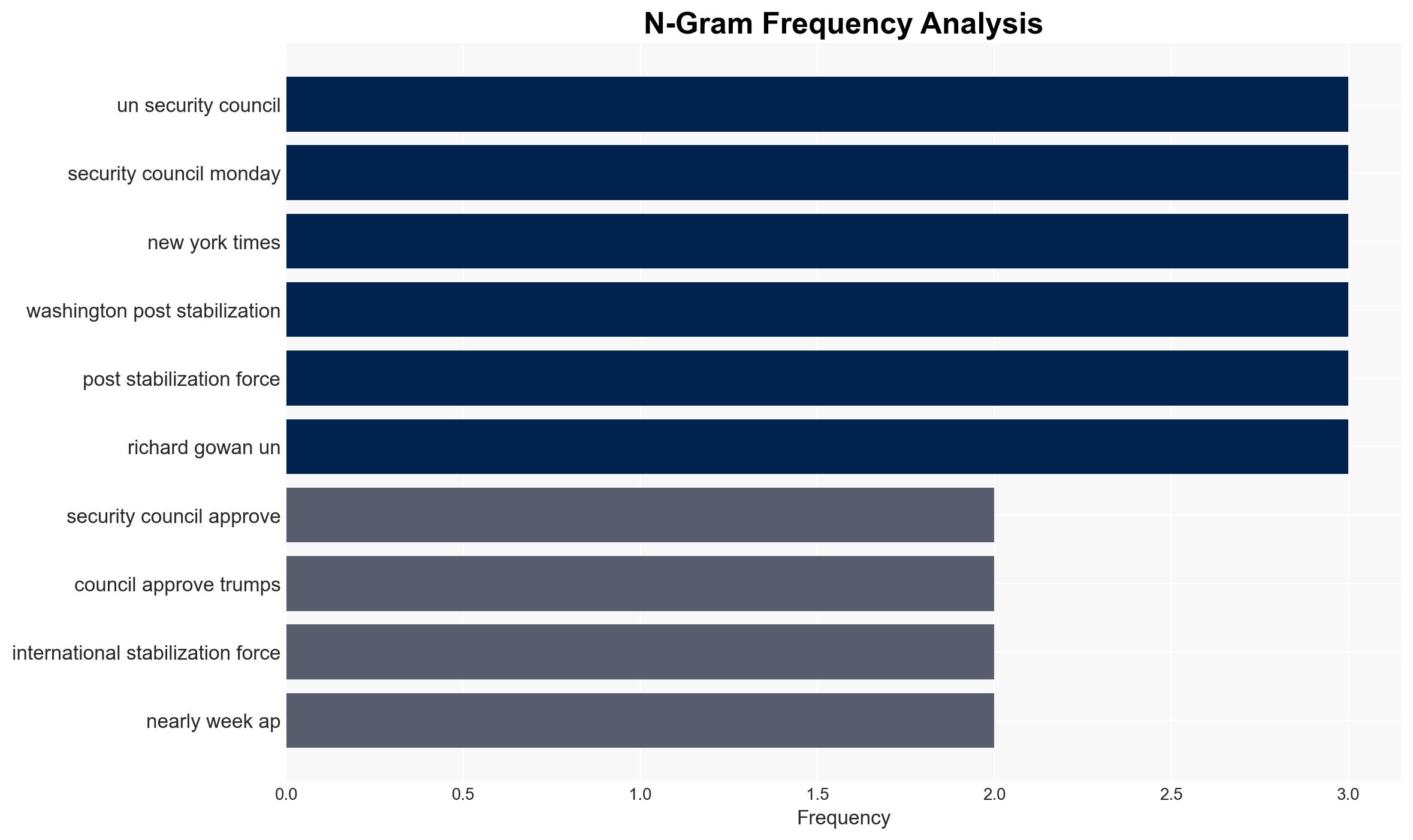Security Council Approves Trump’s Plan for Gaza – Newser
Published on: 2025-11-18
AI-powered OSINT brief from verified open sources. Automated NLP signal extraction with human verification. See our Methodology and Why WorldWideWatchers.
Intelligence Report:
1. BLUF (Bottom Line Up Front)
The UN Security Council’s approval of President Trump’s peace plan for Gaza represents a significant diplomatic development. The most supported hypothesis is that the plan aims to stabilize Gaza through international oversight, though it faces substantial opposition from local factions. Confidence in this assessment is moderate due to geopolitical complexities and potential for regional backlash. Recommended actions include diplomatic engagement with dissenting parties and preparation for potential escalations.
2. Competing Hypotheses
Hypothesis 1: The plan is a genuine effort to stabilize Gaza through international governance and demilitarization, aiming for long-term peace and reconstruction.
Hypothesis 2: The plan primarily serves geopolitical interests of the U.S. and its allies, potentially sidelining Palestinian self-determination and exacerbating tensions.
Hypothesis 1 is more likely given the structured international involvement and focus on reconstruction. However, Hypothesis 2 remains plausible due to the lack of explicit language on Palestinian statehood and the abstention of Russia and China, indicating geopolitical maneuvering.
3. Key Assumptions and Red Flags
Assumptions: The international stabilization force will be effective in demilitarizing Gaza without significant resistance. The Palestinian Authority will comply with reforms.
Red Flags: Hamas’s outright rejection of the plan suggests potential for violent opposition. The abstention of Russia and China may indicate geopolitical tensions or alternative agendas.
Deception Indicators: The portrayal of the plan as a historic peace initiative may obscure underlying geopolitical motives.
4. Implications and Strategic Risks
The plan could lead to increased tensions between local factions and international forces, risking violent clashes. The lack of explicit statehood language may fuel Palestinian discontent and regional instability. Economically, the plan could strain resources if reconstruction efforts face resistance. Information warfare may intensify as factions seek to influence public opinion.
5. Recommendations and Outlook
- Engage diplomatically with Hamas and other dissenting factions to mitigate resistance and foster dialogue.
- Prepare contingency plans for potential escalations, including military and humanitarian responses.
- Best Scenario: Successful stabilization and reconstruction lead to long-term peace.
- Worst Scenario: Escalation of violence and regional instability.
- Most-likely Scenario: Partial implementation with ongoing tensions and sporadic violence.
6. Key Individuals and Entities
Donald Trump, Benjamin Netanyahu, Hamas, Palestinian Authority, UN Security Council, Russia, China.
7. Thematic Tags
Regional Focus, Middle East, International Relations, Peacekeeping, Geopolitics, Conflict Resolution
Structured Analytic Techniques Applied
- Causal Layered Analysis (CLA): Analyze events across surface happenings, systems, worldviews, and myths.
- Cross-Impact Simulation: Model ripple effects across neighboring states, conflicts, or economic dependencies.
- Scenario Generation: Explore divergent futures under varying assumptions to identify plausible paths.
Explore more:
Regional Focus Briefs ·
Daily Summary ·
Support us
·





